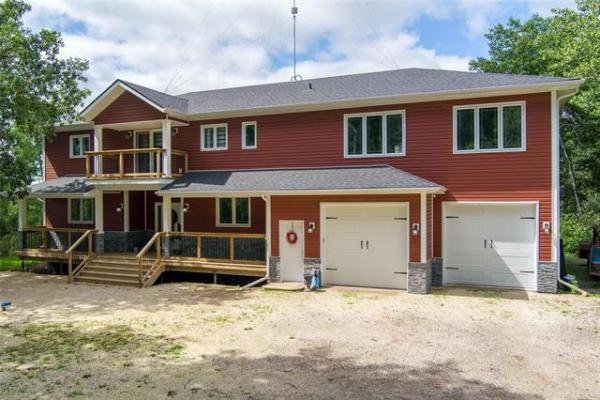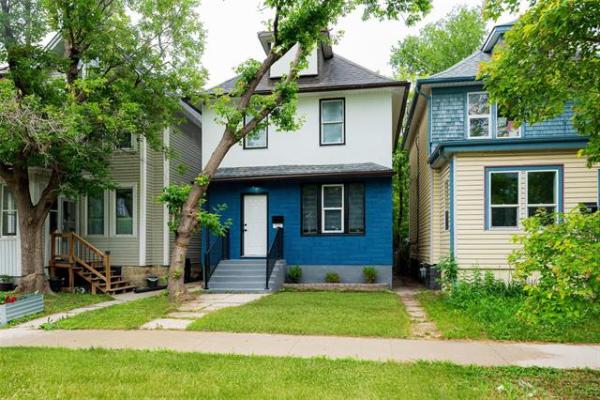111I am currently developing my basement. My home was built in 1974. The previous owner had already framed the exterior walls and installed pink R12 fibreglass insulation along with a vapour barrier, probably around seven years ago. The vapour barrier was not sealed with acoustic sealant, only stapled. I have also installed a high-efficiency furnace approximately five years ago, which may have contributed to elevated moisture in my home. I do not have a fresh-air intake, either.
During the development process I had to remove some of the vapour barrier and insulation in order to attach interior walls. I immediately encountered mould in the top two feet of the wall, especially on the northern sides. The mould was on the entire wall, and some of the other walls as well, but even more concentrated in the corners where it's coldest. Since that point, I have cleaned the walls with bleach and water.
I am currently at the point where I need to insulate again. My initial approach was going to be to use pink fibreglass again, with the vapour barrier on the warm side with acoustic sealant. However, since I really don't want to create problems again, I am thinking my approach would be to spray one inch of closed cell spray foam, from Home Depot, followed by R12 fibreglass and no vapour barrier. I am wondering what your thoughts on this will be for the our climate here in Winnipeg. Your feedback on my situation will be greatly appreciated.
Thank you, Dino Catelanis
A: Basement moisture problems from insulating the inside of the foundation walls are one of the most common questions I receive, mainly due to the mould concern you have noted. There are different schools of thought on how to successfully deal with this difficult issue, but the best solution is often not within a homeowner's budget. I will offer you an option that may satisfy your needs at a more reasonable cost.
To properly address this issue, you must first understand the way air movement occurs inside the wall cavity in this location. Heated house air will normally leak underneath or through the bottom of the wall assembly in a basement. This air contains moisture and heat and will naturally travel upward behind or through the fibreglass insulation. This air will rise, by convection, until the point it loses most of its heat. Often, this is not until it reaches the top of the wall, where the floor joists attach to the foundation walls. When this air cools sufficiently, it will reach its dew point, where the water vapour contained within will condense. When this happens, the insulation and/or foundation wall will become wet. If this occurs in winter, the inside face of the foundation wall may be below 0 C, and the moisture will freeze. This will create a layer of frost or ice, which will melt when warmer spring weather arrives.
The typical solution to these convective air currents in perimeter basement wall assemblies is to seal the wall as tightly as possible, especially at the top and bottom. This is normally accomplished with 6mm polyethylene sheathing and acoustical sealant caulking.
While this can be fairly effective, it is not a perfect solution, and air may still penetrate the wall cavity through fastener holes, electrical boxes, or small gaps anywhere in the assembly. If this air leaks into the wall, we must then try to prevent it from easily moving through or behind the insulation. This is difficult with fibreglass batts because they have very little resistance to air and are designed to trap air to provide the best thermal resistance. Also, they have a tendency to adhere to the cold foundation wall, if any frost develops, preventing quick drying. This can provide an ideal climate for mould to grow on any dust, dirt, or debris in this area.
Because of the "sticking" phenomenon with fibreglass batts, some authorities and contractors have attempted to minimize this issue by leaving a small gap behind the insulation. While this method may help moisture inside the wall dry more quickly, it is a major mistake, in my view. Any air space in this location will provide perfect conditions for convective air currents and almost guarantees condensation, frost and mould growth. To solve this issue, the wall cavity should be always be completely filled with insulation, preferably a type that does not allow air movement.
Your solution of using high-density blown-in foam in minimal thickness will address this issue but will not be thick enough to provide a complete air/vapour barrier. If you were to install three to four times that thickness, it would work, fill the entire wall cavity and eliminate the need for poly sheathing inside the studs. Your way, 6mm poly would still be needed and you would have a substantial extra cost for the foam. A better option might be to install a thin layer of expanded polystyrene insulation on the foundation wall. This rigid material is moisture-resistant and allows some air and moisture movement, but not nearly as much as fibreglass. Those properties should allow you to complete the rest of the wall assembly with the typical batt and poly method, without as much concern about convective air currents. The key to this method is doing a really good job of sealing the rigid insulation and stud walls along the bottom and top to prevent air intrusion, as well as the poly on the inside of the studs. You could complete this by blowing several centimetres of foam at the top of the wall, and in between the floor joists, to seal that critical area.
Your proposed method of re-insulating your basement walls may be somewhat effective in preventing moisture and mould growth, but you will still need a poly air/vapour barrier, and may not be cost-effective. A modified version of your plan, using less costly rigid foam sheathing and less blown foam, may be a better bet.
Ari Marantz is the owner of Trained Eye Home Inspection Ltd. and the past president of the Canadian Association of Home & Property Inspectors -- Manitoba (cahpi.mb.ca). Questions can be emailed to the address below. Ari can be reached at 204-291-5358 or check out his website at trainedeye.ca.
trainedeye@iname.com



